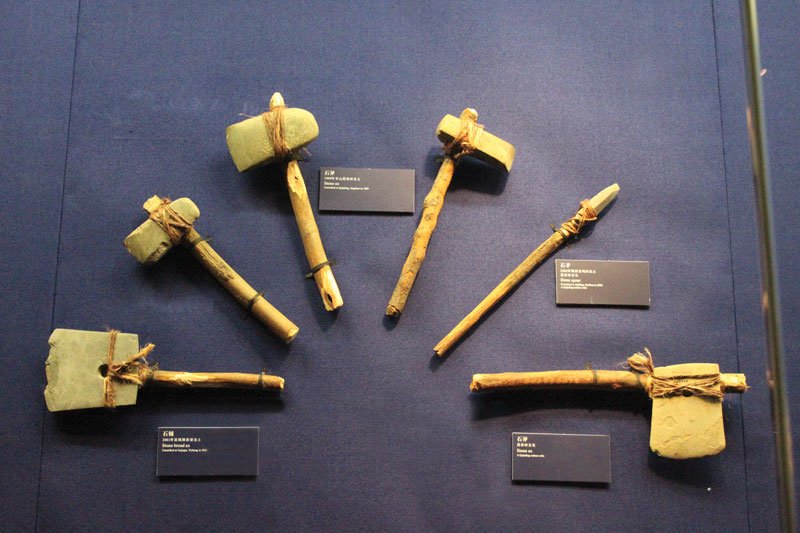The Evolving Mind: How Prehistoric Tools and Weapons Forged Humanity
The development of tools and weapons in prehistory is not merely a story of technological progression but a direct reflection of humanity’s cognitive and cultural evolution. From the first crudely fractured stone to the expertly forged iron sword, each artifact represents a leap in abstract thought, strategic planning, and social complexity. This technological journey, spanning millions of years, provided the crucial instruments for survival and fundamentally shaped the societies that wielded them, charting a course from simple hominin groups to the dawn of civilization. The archaeological record of these implements offers a tangible timeline of our ancestors’ growing mastery over their environment and the very forging of the human mind.
The cognitive leap required for the deliberate manufacture of tools marks a pivotal divergence in the hominin lineage. The earliest known stone tools, the 3.3-million-year-old Lomekwian artifacts, represent a foundational stage of percussive technology, likely used for basic tasks like breaking open nuts. [1] However, the subsequent Oldowan industry, emerging around 2.6 million years ago, demonstrates a more refined cognitive process. [2] Hominins like Homo habilis were not just striking rocks but were intentionally creating sharp-edged flakes from a core, a process requiring hand-eye coordination and an understanding of cause and effect. [1] This was followed by the Acheulean industry, characterized by the iconic bifacial handaxe. Creating these symmetrical, teardrop-shaped tools required significant foresight, the ability to hold a mental template of the final product, and the skill to execute a long sequence of precise strikes. This leap in complexity is mirrored by the cognitive demands of the Levallois technique, which appeared around 300,000 years ago and is strongly associated with Neanderthals. [3][4] This method involved meticulously preparing a stone core to produce a flake of a predetermined size and shape in a single, final strike, a clear indication of advanced planning and abstract thought. [4][5] This capacity for foresight is a watershed moment, demonstrating a focus on an abstract concept—the desired flake—that only materialized at the end of a complex manufacturing sequence. [4]
The Upper Paleolithic period, beginning around 50,000 years ago, witnessed an explosion of innovation linked to the arrival of Homo sapiens. This era is defined by a shift to the highly efficient production of prismatic blades—long, sharp, standardized flakes struck from a prepared core. [6][7] This technology was not just an incremental improvement; it represented a paradigm shift in raw material efficiency, allowing for the creation of a greater length of cutting edge from the same amount of stone. [7][8] These blades formed the basis of a diverse and specialized toolkit, including burins for engraving and carving bone and antler. [7] A critical innovation of this period was the widespread adoption of hafting: attaching stone points and blades to shafts of wood or bone. [9][10] This creation of composite tools, such as spears and knives, was a significant cognitive step, requiring the separate preparation of multiple components and joining them into a functional whole. [11] This period also saw the development of the first true projectile weapons, which dramatically enhanced hunting capabilities. The spear-thrower, or atlatl, acted as a lever to hurl darts with greater velocity and from a safer distance, an advantage that likely contributed to the success of modern humans. [12][13] Evidence from sites like Grotta del Cavallo in Italy suggests mechanically delivered projectiles may have been used as early as 45,000 years ago, thousands of years earlier than previously thought. [14]
The end of the Stone Age was precipitated by the discovery of metallurgy, a technological revolution that fundamentally reshaped societies. The transition began with the Chalcolithic or Copper Age, where native copper was hammered into ornaments and simple tools. [15][16] However, copper alone was too soft to fully replace stone. [17] The true turning point was the invention of bronze—an alloy of copper and tin—which was significantly harder and more durable. [18] Bronze revolutionized both agriculture and warfare; bronze plows improved crop yields, while bronze swords, spearheads, and armor conferred a decisive military advantage, fueling the rise of powerful empires and organized warfare. [18][19] The subsequent development of iron smelting around 1200 BCE marked another profound shift. [20][21] Iron ore was more abundant than copper and tin, making iron tools and weapons cheaper and more accessible. [17][22] While early iron was not necessarily superior to high-quality bronze, the development of techniques to create steel—an iron-carbon alloy—produced a material that was far harder and held a better edge. [23] This democratization of metal weaponry had immense social consequences, while iron tools like the plowshare further boosted agricultural productivity, supporting larger populations and paving the way for the complex civilizations of the classical world. [21][24]



